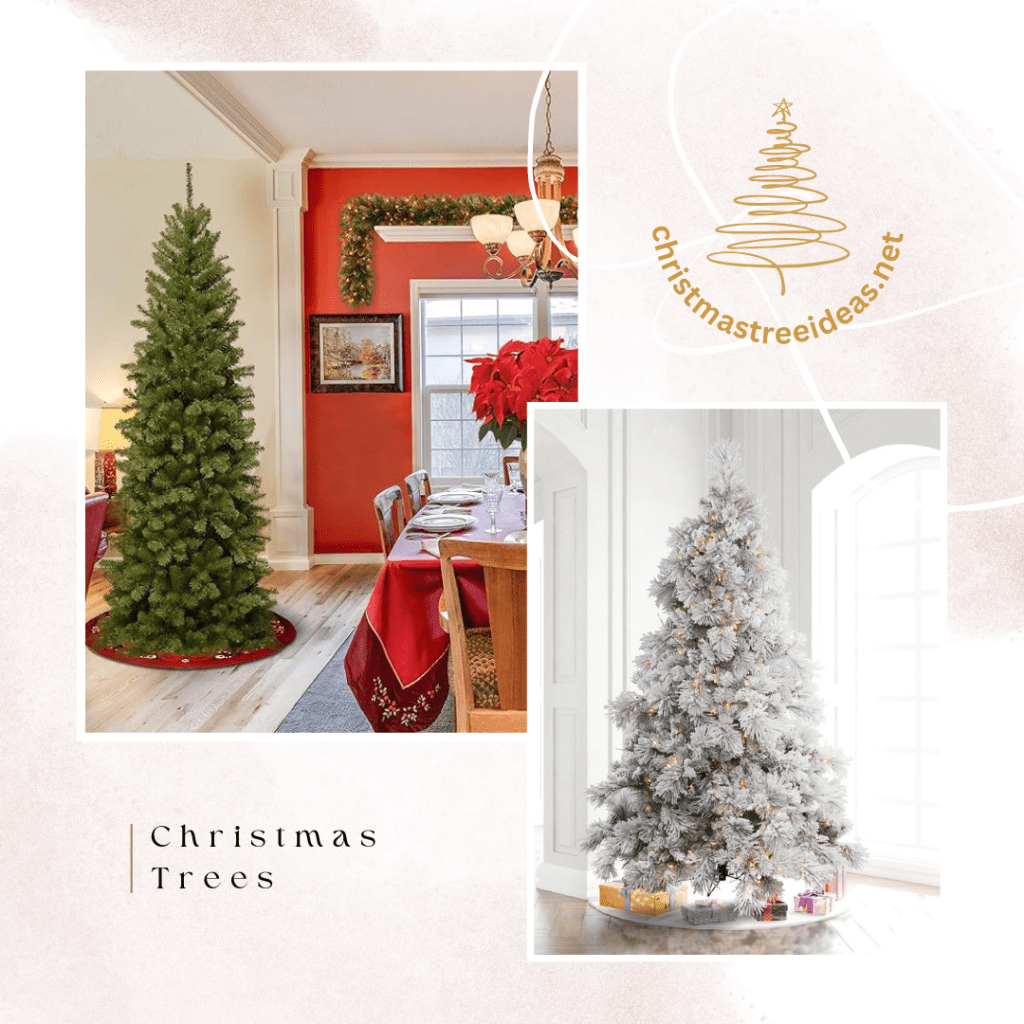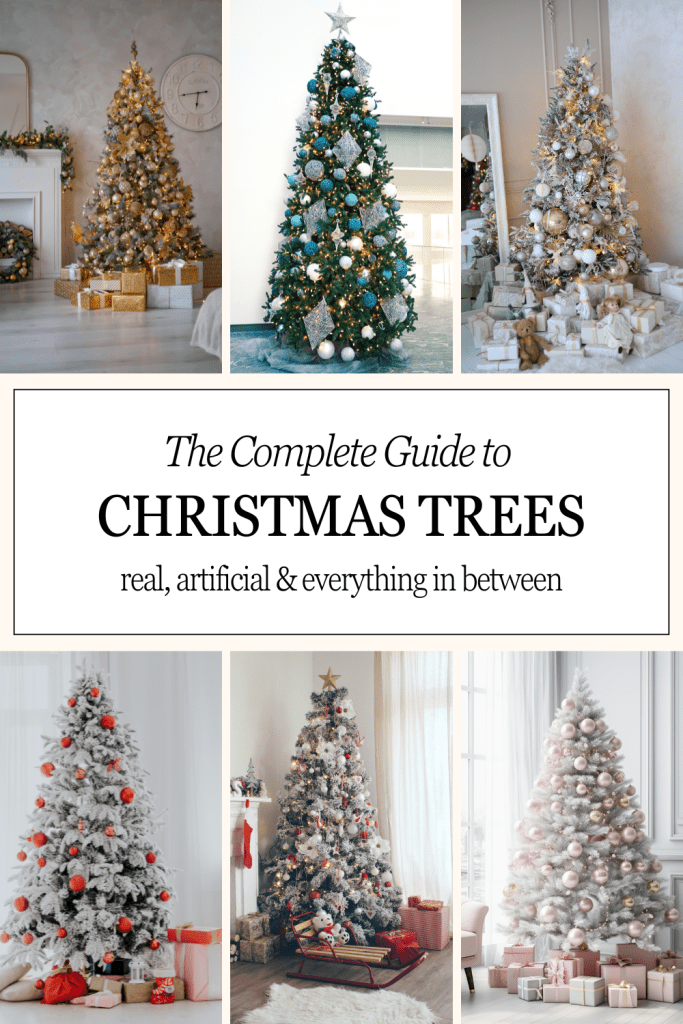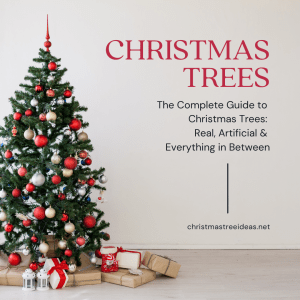For many families, nothing says Christmas like the twinkle of lights on a decorated tree. Christmas trees aren’t just seasonal decor, however, they are steeped in history, tradition and even a bit of debate. Should you buy a real tree or go with artificial? Is it worth keeping a tree up year-round and decorating it for different holidays? What’s the best way to store it when the season’s over?
This guide dives into everything you need to know about Christmas trees – from their fascinating history to the rise of artificial trees, creative decorating trends and practical storage solutions.
A Brief History of the Christmas Tree
The Christmas tree we all know and love today has deep roots in history. Let’s dive into them:
Ancient Evergreen Traditions (Pre-Christian Symbolism)
Long before Christianity, evergreens were symbols of life and renewal. Ancient Egyptians, Romans and Druids all decorated their homes with greenery in the winter months to ward off evil spirits and celebrate the return of the sun.
16th Century Germany and the First Decorated Trees
The modern Christmas tree tradition began in 16th century Germany. Devout Christians brought decorated trees into their homes, often adorned with apples, oranges, nuts and candles to symbolize paradise and light.
Queen Victoria, Prince Albert & Popularity in England
The custom spread across Europe, but it was Queen Victoria and Prince Albert who made the Christmas tree a beloved symbol in the 1800s. An illustration of their family gathered around a decorated tree appeared in the Illustrated London News, inspiring households across Britain and America to adopt the practice.
The Christmas Tree in America
German immigrants brought the tradition to the US. By the late 19th century, decorated trees – often with hand-blown glass ornaments – were a staple of holiday celebrations. Over time, new innovations like electric string lights made decorating even easier.
Real vs. Artificial Christmas Trees: Which is Better?
The great Christmas debate: should you buy a real tree each year or invest in an artificial one? Both have their charms, but let’s break it down.
The Tradition of Real Trees
- Fresh scent: Nothing quite matches the smell pf pine, spruce or fir filling your home and bringing back childhood memories.
- Family Tradition: Many families enjoy the ritual of choosing a tree together.
- Natural beauty: Real trees have unique shapes and textures which can’t be replicated with an artificial tree.
- Environmental considerations: Trees are grwon as crops, not cut from forests and may are recycled after the season.
The Rise of Artificial Christmas Trees
- Mid-20th century boom: Aluminum trees were trendy in the 1950s and the PVC trees gained popularity in the decades that followed.
- Today’s options: Modern artificial trees are incredibly realistic. Some even come pre-lit, flocked with snow or designed with color-changing lights.
The Debate: Real vs Fake Trees
Real Trees
✅ Natural scent and charm
✅ Supports local farms
❌ Need watering and cleanup (fallen needles)
❌ Can be costly year after year
❌ Disposal required
Artificial Trees
✅ Reusable for 10+ years
✅ Cost-effective in the long run
✅ Easy to set up, take down, and store
✅ Safer (less fire risk, no allergens)
❌ No natural scent (though scented ornaments or sprays help)
❌ Made of synthetic materials
If you’re looking for convenience, cost savings and eco-friendliness over time, artificial trees are the clear winner.
Advantages of Artificial Christmas Trees
Artificial trees are the go-to choice for millions of households and for good reason. If you live in a warmer climate a real tree won’t always survive very long. I must confess I also like having a uniform shaped tree which is why I go for an artificial tree. Let’s look at some of the main reasons:
Cost-Effective Over Multiple Years
A high-quality artificial tree can last 10-15 years. Even if you spend $200 upfront, that averages to less than $20 per year – far cheaper than buying a $60-$100 real tree annually
Safe and Low Maintenance
- No dry needles creating fire hazards
- No watering needed
- No messy sap or shedding
Styles and Sizes for Every Home
Artificial trees come in endless varieties:
- Slim and pencil trees – perfect for small spaces
- Flocked trees – with a snowy look
- Pre-lit trees – save hours of stringing lights (and the untangling of them beforehand if you weren’t careful in storing them the year before!)
- Color-changing LED trees – for modern, customizable vibes
Eco-Friendly When Reused
While real trees are biodegradable, artificial ones reduce waste when reused for a decade or ore. Pairing one artificial tree with eco-friendly ornaments and LED lights is a sustainable choice.
What to Do with a Real Christmas Tree After the Holidays
If you still prefer a real tree, the challenge is what to do once the season ends. Let’s look at your options:
Recycling and Composting
Many local councils offer curbside pickup for real trees, turning them into mulch or compost for parks.
Replanting a Living Tree in the Garden
If you purchase a potted tree with roots, you can replant it in your garden after Christams. With care, it can grow year after year, becoming a beautiful part of your landscape.
Donating to Zoos or Farms
Some zoos and farms accept donated trees as enrichment for animals. Elephants, goats and big cats enjoy playing with or eating the branches.
Local Disposal Programs
Check your local recycling centers – many have drop-off points for tree mulching.
Year-Round Christmas Trees and Seasonal Decorating Trends
Why limit your tree to December? More families are keeping their artificial trees up year-round, decorating them for holidays and seasons. Here are some of the common ones celebrated:
Valentine’s Day Trees
Decorate with red, pink and white ornaments, hearts and ribbons.
St Patrick’s Day Trees
Green and gold baubles, shamrocks and rainbow garlands bring Irish cheer to your tree.
Easter and Spring Trees
Pastel ornaments, flowers and bunny figures transition your tree into springtime. Decorated eggs are a beautiful addition for Easter.
4th July Trees
Red, white and blue ornaments, flags and star toppers make a patriotic statement with your tree.
Halloween Trees
These are becoming increasingly popular, some people use their Christmas trees while others have a dedicated Halloween tree (often black in color). Use orange, black and purple ornaments, along with pumpkins, bats and spider webs to create spooky vibes.
Other Year Round Trees
- A beach themed tree for summer is a great idea.
- I’ve seen someone with a year round sunflower themed tree.
- Embrace in between seasons with a coffee lovers tree or a tea drinkers tea.
- A farmland animal tree or safari tree could be used year round as well.
- If you’re a sports fan then decorate a tree for the season such as this Baltimore Ravens’ Christmas Tree
- Celebrate smaller holidays that are important to you – birthdays, anniversaries, mother’s day, father’s day, grandparent’s day etc.
A year-round tree not only spreads joy beyond Christmas but also gives you a chance to use your ornaments in creative ways (or an excuse to buy more ornaments!)
How to Store an Artificial Christmas Tree
Proper storage extends the life of your tree and makes set up easier next year. A friend of a friend actually had a tree sized cupboard built into her house design when she was building and simply leaves her tree decorated in the cupboard throughout the year. This isn’t an option for most of us however!
Collapsible and Foldable Designs
Most modern trees disassemle into sections and fold for compact storage.
Tree Storage Bags and Boxes
Special storage bags (often wheeled) keep your tree dust-free and protected. Plastic tubs or cardboard boxes can also work.
Labeling and Organizing by Size/Branch
Mark each section (bottom, middle, top) so that reassembly is simple. Some trees do have markings already on them when you purchase them.
Preventing Dust and Damage During Storage
Keep the tree in a dry, cool space if possible. Traditional Christmas decoration storage places such as the garage and the attic are not optimal as temperature swinges can cause damage to your tree.
Buying an Artificial Christmas Trees
When looking at online retailers, Amazon have a huge selection with fast delivery.
Specialty Brands
There are three specialty brands that I would look for when purchasing a Christmas tree and they are:
- Balsam Hill – this brand is knwn for ultra-realistic, luxury trees.
- National Tree Company – this brand offers affordable, durable options.
- Vickerman – this brand offer large, decorator-quality trees.
Budget vs Luxury
- Budget: Great for first-time buyers, rentals or smaller trees.
- Luxury: Higher upfront cost, but exceptional realism and durability.

Frequently Asked Questions About Christmas Trees
How long do artificial Christmas trees last?
A good artificial tree can last 10-15 years with proper care and storage.
Are artificial trees more eco-friendly than real ones?
Yes, when reused for a decade or longer. While they’re made of synthetic materials, the long lifespan offsets environmental costs compared to cutting down a real tree each year.
How do you make a fake tree look more realistic?
Fluff the branches thoroughly, use plenty of ornaments and lights and add natural touches like pinecone picks, ribbon or garland. Some people even use pine-scented sticks for authenticity.
How can you recycle an artificial Christmas tree?
While they can’t be composted like real trees, some recycling centers accept artificial trees for parts, or you can donate them to thrift stores, churches or schools.
What size tree is best for my room?
Measure your ceiling height and allow at least 6-12 inches clearance for a tree topper. Slim or pencil trees work well in small spaces, while full trees are ideal for larger living rooms.
Final Thoughts
Christmas trees are the heart of holiday decorating – whether you prefer the natural scent of a real tree or the convenience of an artificial one. While real trees carry nostalgia, artificial trees offer affordability, safety and ease of use that make them the more practical choice for most households.
Also, with today’s trends, your tree doesn’t havve to stay in the attic 11 months of the year. From Valentine’s Day to Halloween, a year-round tree can bring joy to every season.
So whether you’re choosing your first artificial tree or upgrading to a more realistic style, remember the Christmas tree isn’t just decor. It’s a tradition, a memory maker and the centre piece of holiday cheer.


